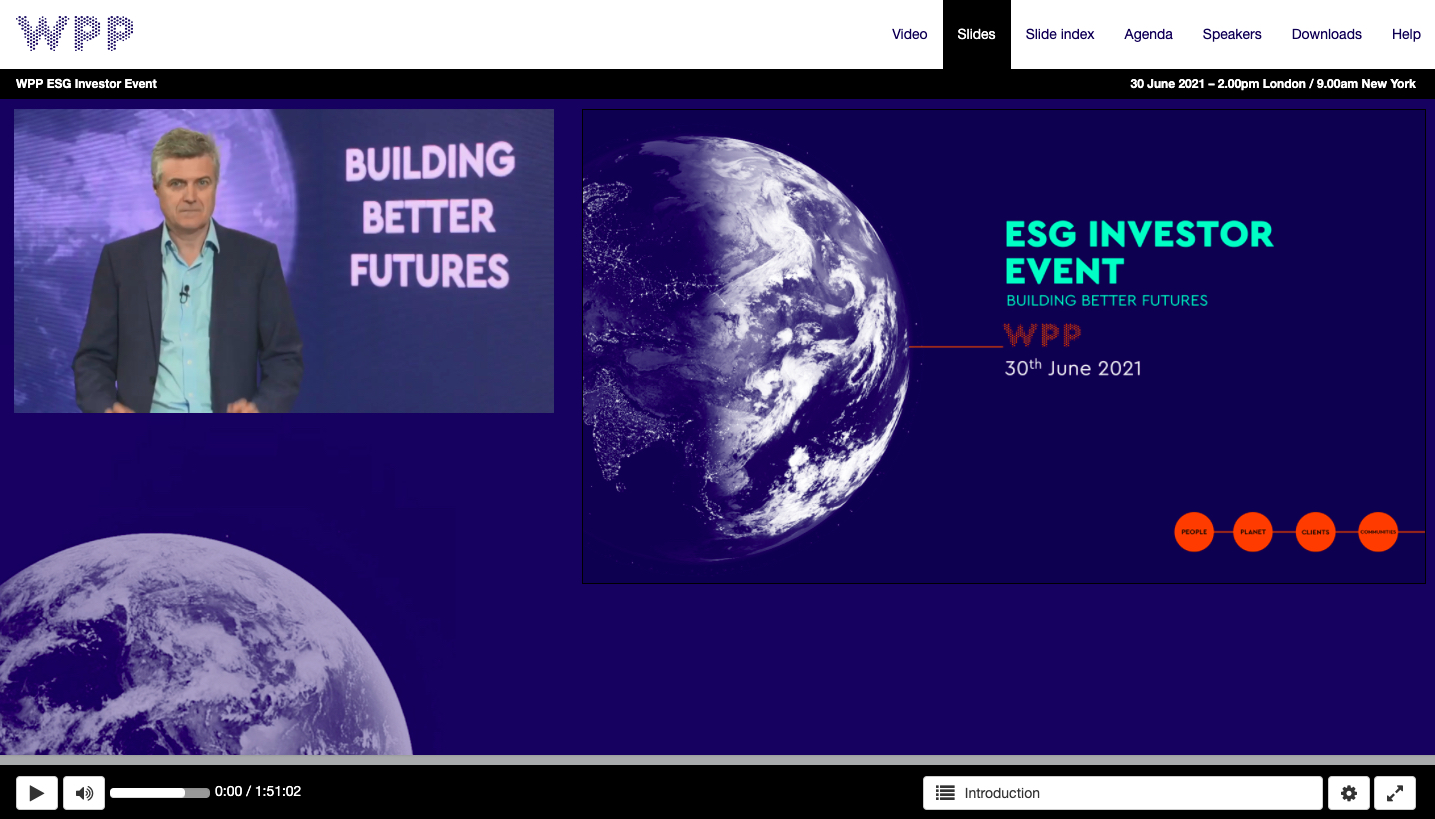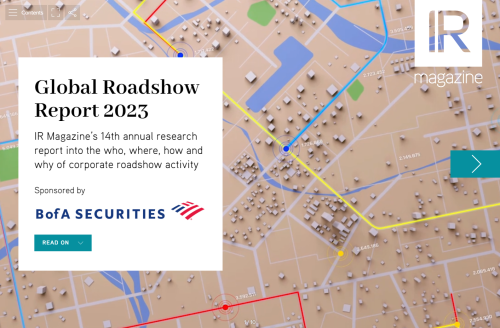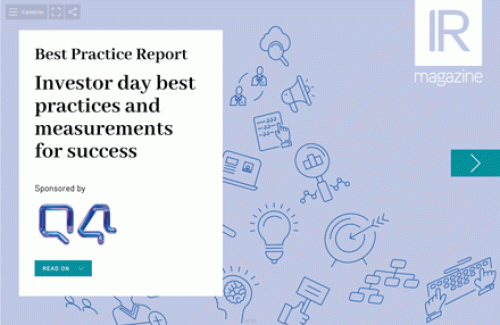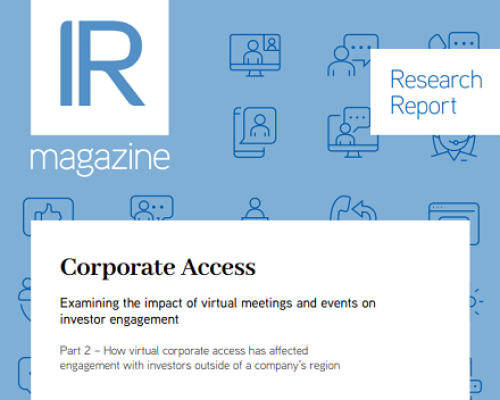A question occupying the minds of many IR professionals today is how to tell their company’s ESG story. Issuers are increasingly placing ESG issues at the heart of corporate strategy, a shift they want to communicate to shareholders and other stakeholders. Meanwhile, external demands for more ESG disclosure continue to grow, with investors, ratings agencies and NGOs calling for more detail on areas such as climate risk, water scarcity and human capital management.
Many companies start with a sustainability report, but which other channels could support getting your message across and ensuring key data is available to interested parties? Across a series of articles, we look at case studies from investor relations teams that have held an ESG investor day, launched an ESG statbook, discussed ESG on the earnings call and released a thematic report on a single sustainability topic. Are you trying anything else? Get in touch and let us know.
ESG investor day: WPP
ESG-themed investor days have become a popular, if not yet mainstream, event for listed companies. It means issuers putting them on now are in something of a sweet spot, says Peregrine Riviere, director of group investor relations at WPP, the FTSE 100-listed advertising giant.
‘We are in the first third of big companies to do this,’ he says. ‘You get to learn from what other people have done – see what works and what doesn’t. And then you can use your own skills as a company to try to do something a bit different.’
WPP put on its first ESG investor day in June. The two-hour virtual event began with a discussion of the company’s purpose, before diving into four segments on people, planet, communities and governance. No new information was released at the event – all the data came from either the annual report or the sustainability report. For Riviere, an event such as this provides an opportunity to present the whole ESG story in one go and bring it to life with case studies from client work and sustainability practices within the organization.

Mark Read, CEO of WPP, at the company's ESG investor day
‘I’ve been doing IR for 20 years and have heard a lot about how CSR or SRI is next year’s big thing – and next year has finally arrived,’ says Riviere. ‘I felt we should put everything in one place so investors of all types could access it in an easily digestible way.’
During the event, WPP had specific messages it wanted to convey. First, it showcased just how much ESG is now a business driver. ‘Coming out of the Covid-19 pandemic, there’s hardly a client brief that comes across our desk – whether it’s in branding, advertising or PR and reputation – that doesn’t have some kind of purpose or ESG angle,’ Riviere points out.
Second, the group reinforced the progress it has made on corporate governance, following the departure of founder and long-time CEO Martin Sorrell in 2018. Under Sorrell’s leadership, WPP had become a byword for lax governance structures and outlandish executive pay. ‘We wanted to tell a story of how far we have come in the last three years,’ says Riviere.
Third, it wanted to highlight its people-focused culture. As a company providing advice and technical skills, WPP’s employees are the source of its value. ‘We are a people business,’ says Riviere. ‘Sixty-five percent of our costs are people. The average age is young, below 30. Millennials really care about sustainability issues. It’s important to communicate that you are serious.’
As the world’s biggest advertising company by revenue, WPP has helped hundreds of businesses explain their own ESG credentials. But that work comes with difficult questions. If the company is committed to sustainability, why does it continue to work with sectors like oil & gas or tobacco, for example?
Riviere acknowledges this as the main ESG-focused question right now from investors and analysts, and one the company tried to tackle during the event. ‘Our approach here is we will not work with companies that are making misrepresentative or misleading claims,’ he says.
‘We don’t stand in judgment over what products people produce or market, but the marketing has to be responsible. For a small cadre of investors, that’s probably not enough. But for the vast majority, I think it is.’
Teamwork
Logistically, the event was run jointly by the IR team – given its experience putting on big investor days – and the sustainability team. Riviere enjoyed support from various departments, including corporate affairs, legal, company secretariat and WPP’s central client team, to deliver the content.
‘We were very fortunate because we have a nice studio in our office and businesses that make films – adverts are lovely things to show,’ he says. ‘We were also not too precious on all production values. We’d just been through a year of Covid and everyone is used to talking on Zoom, so we were happy to have people record themselves on iPhones for 30 seconds or a minute.’
During the preparation, Riviere stressed to other departments the importance of engaging the audience through case studies. This plays into his broader philosophy that IR should try to appeal to both the logical and emotional parts of the brain.
‘IROs forget that a lot of the investment process is emotional and attachment-based,’ he explains. ‘How do I feel about this company in a way I can’t define? So this is exactly the kind of event where there’s a little bit of left brain – there are some statistics and targets – but the way you bring it to life is all about the right side of the brain. And if WPP can’t do that, then no one can. This is our skill.’
Riviere says one recommendation is to prerecord as much as you can to help the event run as smoothly as possible. He also suggests doing extra prep with management team members to make sure they are comfortable discussing sustainability topics in detail.
In terms of speakers, WPP decided to use the management team and not include any non-executive directors – a departure from some other ESG investor days. The company felt the people directly responsible for the issues being discussed should be the ones who present, explains Riviere: ‘You need a positive reason to include the non-executives.’
As a final piece of advice, he says don’t forget the various audiences of an ESG investor day. ‘Even if you are doing this for investors, your people, clients and customers are also going to be really interested,’ says Riviere. ‘You definitely have to factor that in.’
This is an extract of an article that was published in the Fall 2021 issue of IR Magazine. Click here to read the full article.










